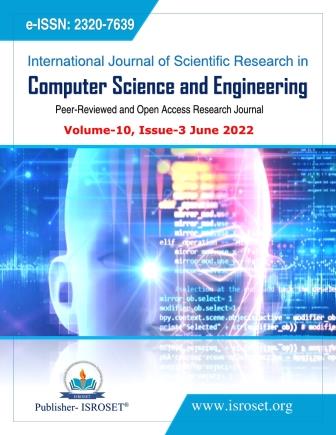A Study on the Numerical Accuracy and Efficiency of the Bisection Method in Finding Square Roots of Positive Real Numbers
Keywords:
Bisection method, Square root, Algebraic and transcendental equations, Numerical computation of zeros, Root mean square error, Accuracy, Rate of convergence, EfficiencyAbstract
Calculating square roots of positive real numbers play a vital role in scientific and engineering computing. From the daily-life used calculators to the computer software used as a calculator often use the square root function. However, finding the real roots of algebraic and transcendental equations is one of the most exciting topics in numerical computation. There are several methods, such as the Bisection, Secant, Iteration, and Newton-Raphson’s methods, to do that. The speciality of the Bisection method is its robustness and needs no stability criterion. Although it convergences slowly, it always convergences. In this study, we assessed the numerical accuracy through the root mean square error (RMSE) value for this method by applying it to finding square roots of some positive real numbers. Also, we calculated the computational time and number of iterations to convergence to an exact root with the error tolerance of 0.000001 for assessing the method’s efficiency. The method’s RMSE value obtained in our study is of order 10-7, indicating its reasonably acceptable accuracy level. We got this accuracy within 23 iterations in each case, and the computational time is a tiny fraction of a millisecond; these indicate the excellent efficiency level of the method. Our inquiry has found the method reasonably acceptable, efficient, and robust.
References
Hafijur Rahman, Abul Khair, Nigar Sultana, “A Competitive Study on the Euler and Different Order Runge-Kutta Methods with Accuracy and Stability,” International Journal of Scientific Research in Mathematical and Statistical Sciences, Vol.9, Issue.1, pp.21-25, 2022.
Gour Chandra Paul, Farjana Bilkis, Md Emran Ali, Mrinal Chandra Barman, “Settling time of solid grains in gaseous giant protoplanets,” Planetary and Space Science, Vol.200, Issue.1, pp. 105212, 2021.
Gour Chandra Paul, Shahinur Khatun, Md Nuruzzaman, Dipankar Kumar, Md Emran Ali, Farjana Bilkis, Mrinal Chandra Barman, “Solving protoplanetary structure equations using Adomian decomposition method,” Heliyon, Vol.7, Issue.10, pp.e08213, 2021.
Bachir Nour Kharrat, George A Toma, “Development of Homotopy Perturbation Method for Solving Nonlinear Algebraic Equations,” International Journal of Scientific Research in Mathematical and Statistical Sciences, Vol.7, Issue.2, pp.47-50, 2020.
Gour Chandra Paul, Sukumar Senthilkumar, Hafijur Rahman, “On the implementation of novel RKARMS (4,4) algorithm to study the structures of initial extrasolar giant protoplanets,” Heliyon, Vol.6, Issue.1, pp. e02865, 2020.
Richard L Burden, J Douglas Faires, “Numerical Analysis,” Cengage Learning, USA, 2011.
Alpaslan Ersöz, Mehmet Kurban, “Algorithmic Approach And An Application For Bisection Method Using,” Conference Paper, pp.1-5, 2013.
Shengwen Xu, Xuefeng Wang, Lei Wang, Bo Li, “Application of bisection method and controller gains database method in dynamic station-keeping capability analysis,” International Conference on Offshore Mechanics and Arctic Engineering, Vol.56475, Issue.1, pp.V001T01A057, 2015.
Vishal V Mehtre1, Durgesh Chandrakar, “Review Paper on Detailed Analysis of Bisection Method and Algorithm for Solving Electrical Circuits,” International Journal for Research in Applied Science & Engineering Technology, Vol.7, Issue.11, pp.-959-964, 2019.
Gauri Thakur, J K Saini, “Comparative Study of Iterative Methods for Solving Non-LinearEquations,” Journal of University of Shanghai for Science and Technology, Vol.23, Issue.27, pp.858-866, 2021.
Qani Yalda, “Numerical Solution of Nonlinear Equations in Maple,” International Journal for Research in Applied Sciences and Biotechnology, Vol.8, Issue.4, pp.34-37, 2021.
Graham R Wood, “The bisection method in higher dimensions,” Mathematical Programming, Vol.55, Issue.1, pp. 319-337, 1992.
Patricio Basso, “Iterative methods for the localization of the global maximum,” SIAM Journal on Numerical Analysis, Vol.19, Issue.4, pp. 781-792, 1982.
Bruno O Shubert, “A sequential method seeking the global maximum of a function,” SIAM Journal on Numerical Analysis, Vol.9, Issue.3, pp. 379-388, 1972.
John E Dennis Jr, Robert B Schnabel, “Numerical methods for unconstrained optimization and nonlinear equations,” SIAM, USA, 1996.
Steven C Chapra, Raymond P Canale, “Numerical Methods for Engineers,” McGraw-Hill New York, USA, 2015.
S S Sastry, “Introductory Methods of Numerical Analysis,” PHI Learning Pvt. Ltd., India, 2012.
A Eiger, Kris Sikorski, Frank Stenger, “A bisection method for systems of nonlinear equations,” ACM Transactions on Mathematical Software, Vol.10, Issue.4, pp. 367-377, 1984.
Graham R Wood, “Multidimensional bisection applied to global optimisation,” Computers & Mathematics with Applications, Vol.21, Issue.6, pp. 161-172, 1991.
Charles Harvey, Frank Stenger, “A two-dimensional analogue to the method of bisections for solving nonlinear equations,” Quarterly of Applied Mathematics, Vol.33, Issue.4, pp. 351-368, 1976.
Baker Kearfott, “An efficient degree-computation method for a generalized method of bisection,” Numerische Mathematics, Vol.32, Issue.2, pp. 109-127, 1979.
Ralph Baker Kearfott, “Computing the degree of maps and a generalized method of bisection,” The University of Utah., Utah, 1977.
Krzysztof Sikorski, “A three-dimensional analogue to the method of bisections for solving nonlinear equations,” Mathematics of Computation, Vol.33, Issue.146, pp. 722-738, 1979.
Krzysztof Sikorski, “Bisection is optimal,” Numerische Mathematics, Vol.40, Issue.1, pp. 111-117, 1982.
Krzysztof Sikorski, G M Trojan, “Asymptotic Optimality of the Bisection Method,” Columbia University, USA, 1984.
Downloads
Published
How to Cite
Issue
Section
License

This work is licensed under a Creative Commons Attribution 4.0 International License.
Authors contributing to this journal agree to publish their articles under the Creative Commons Attribution 4.0 International License, allowing third parties to share their work (copy, distribute, transmit) and to adapt it, under the condition that the authors are given credit and that in the event of reuse or distribution, the terms of this license are made clear.







